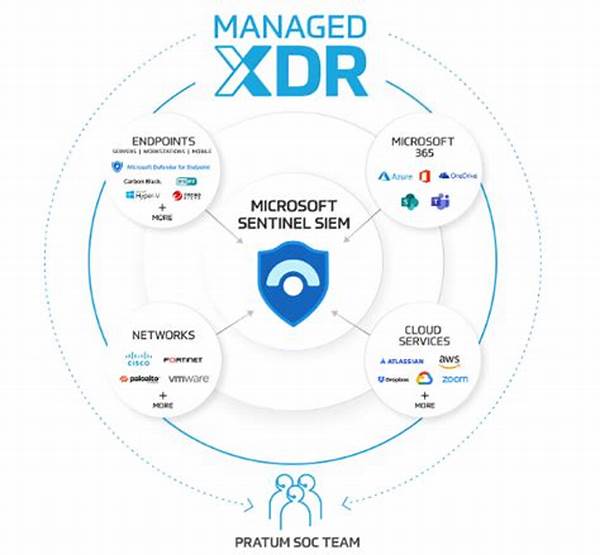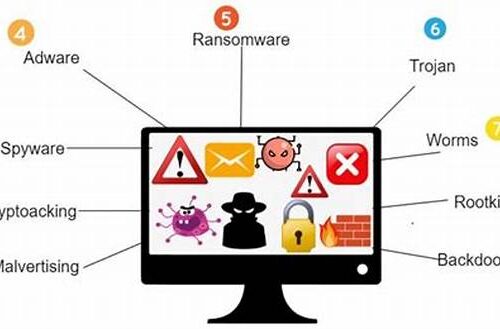In today’s rapidly evolving cybersecurity landscape, businesses are faced with the daunting task of protecting their digital assets from an increasing array of threats. As traditional methods of security become less effective at countering sophisticated attacks, organizations are turning toward more advanced solutions. Among these, Extended Detection and Response (XDR) is emerging as a comprehensive and integrated approach that promises enhanced security posture through improved threat detection, investigation, and response capabilities.
Read Now : Enhance Speed Of Windows Applications
The Importance of Extended Detection and Response
Extended Detection and Response represents a significant advancement in cybersecurity strategies. Unlike traditional security measures that often operate in silos, XDR offers a unified approach to threat management. By integrating various security technologies into a single platform, XDR enables companies to gain a holistic view of their environment. This integration facilitates better correlation of threat intelligence and leads to more accurate detection of security incidents.
Furthermore, extended detection and response prioritizes automation and machine learning to enhance the efficiency of security operations. With automated processes, security teams can reduce the manual effort required to analyze and respond to threats. Machine learning algorithms, on the other hand, continuously learn from past incidents, enabling them to predict and thwart future attacks more effectively.
In addition to improved detection capabilities, XDR also streamlines the response process. By providing a cohesive workflow, it allows teams to respond swiftly and appropriately to incidents, minimizing potential damage. Overall, extended detection and response not only enhances an organization’s ability to detect threats but also fortifies its capacity to respond promptly and effectively.
Key Features of Extended Detection and Response
1. Integration Across Platforms:
Extended detection and response helps break down silos by integrating data from multiple security solutions into a unified platform, offering a comprehensive view of the security landscape.
2. Enhanced Threat Intelligence:
By correlating data from diverse sources, extended detection and response amplifies the accuracy of threat intelligence, enabling more precise threat identification and mitigation strategies.
3. Automated Threat Detection:
Leveraging machine learning and AI technologies, extended detection and response automates many aspects of threat detection, significantly reducing the time and effort required from security teams.
4. Efficient Incident Response:
Extended detection and response streamlines incident response procedures by providing intuitive workflows and automatic responses, facilitating faster and more effective threat mitigation.
5. Continuous Monitoring:
With extended detection and response, organizations benefit from round-the-clock monitoring, ensuring threats are identified and handled as soon as they emerge, reducing downtime and potential losses.
Implementing Extended Detection and Response
Adopting an extended detection and response solution demands careful planning and execution. First, organizations must assess their current security infrastructure to identify gaps where XDR can bring significant improvements. A complete understanding of existing assets, vulnerabilities, and potential entry points is essential.
Next, selecting the right XDR provider is critical. Different solutions offer varying levels of feature integration, scalability, and support. Organizations should seek a provider whose capabilities align with their specific needs and growth plans. Moreover, implementation should be aligned with the organization’s overall security strategy to ensure seamless integration.
Finally, regular evaluation and updates are crucial. Cyber threats continually evolve, and so must the strategies used to counter them. Extended detection and response solutions should be periodically reviewed to ensure they remain effective and are leveraging the latest technological advancements. By adhering to these steps, companies can maximize the potential benefits of extended detection and response, reinforcing their security posture in the digital age.
Evaluating the Benefits of Extended Detection and Response
1. Holistic Security Approach:
Extended detection and response removes the compartmentalization of security tasks by offering a unified method of managing them, resulting in a more cohesive defense mechanism.
2. Operational Efficiency:
By automating routine tasks and anomaly detection, extended detection and response significantly boosts operational efficiency, freeing up resources for strategic initiatives.
3. Cost-Effectiveness:
Extended detection and response can ultimately reduce costs by minimizing manual labor, consolidating security tools, and reducing the financial impacts of security breaches.
4. Proactive Threat Management:
Read Now : Precision Gaming Mouse Pad
With extended detection and response, organizations can move from a reactive to a proactive threat management posture, anticipating and neutralizing threats before they can cause harm.
5. Enhanced Compliance:
The comprehensive reporting and documentation capabilities of extended detection and response facilitate easier compliance with regulatory standards and audit requirements.
6. Better Visibility:
Extended detection and response provides unmatched visibility into all activity within an organization’s network, making it easier to detect anomalies and potential threats.
7. Real-Time Threat Correlation:
The ability of extended detection and response to correlate threats in real-time means quicker identification and neutralization of coordinated attacks.
8. Scalable Solutions:
As businesses grow, extended detection and response solutions can scale with them, accommodating expanding networks without compromising effectiveness.
9. Unified Insights:
With integrated dashboards and reporting, extended detection and response delivers unified insights into security metrics, streamlining management and oversight.
10. Continuous Improvement:
Extended detection and response solutions often include continuous improvement mechanisms, leveraging AI to enhance performance and adapt to emerging threats.
Challenges in Adopting Extended Detection and Response
Adopting extended detection and response does come with challenges. One of the primary obstacles is the complexity inherent in integrating various security tools and data sources into a unified XDR platform. Organizations may face difficulties in aligning their existing infrastructure with the new system, requiring careful planning and expert guidance to overcome.
Another challenge lies in the initial cost and resource allocation needed to implement an extended detection and response solution. While the long-term benefits are significant, the startup phase can be resource-intensive, demanding investment in technology and training. Security teams must be adequately trained to operate the new tools and workflows effectively.
Despite these challenges, the advantages of adopting extended detection and response outweigh the initial hurdles for most organizations. The ability to detect threats more accurately, respond quickly, and operate more efficiently ensures that businesses can withstand the ever-increasing threats in today’s digital landscape. With strategic planning and careful execution, overcoming the challenges of implementing extended detection and response can lead to strengthened security and greater peace of mind.
Extended Detection and Response for Future-Proofing Security
Organizations worldwide are recognizing the necessity of evolving their security practices as threats continue to grow both in number and sophistication. Extended detection and response is paving the way for future-proof security strategies by allowing enterprises to integrate and automate threat detection and mitigation processes.
In the future, the role of extended detection and response will expand beyond traditional IT environments. As more organizations embrace digital transformations and adopt Internet of Things (IoT) technologies, the scope of XDR will need to include these new facets, ensuring comprehensive protection across all digital domains. As such, investment in XDR is a strategic move for any forward-thinking organization.
Moreover, technology advancements, particularly in AI and machine learning, will further refine extended detection and response capabilities. This refinement will enable even faster threat detection, real-time adaptability, and a more nuanced understanding of complex security landscapes. Organizations that are proactive in adopting XDR now will be better positioned to leverage these innovations as they arise.
Conclusion: Embracing Extended Detection and Response
The advent of extended detection and response marks a pivotal moment in the ongoing evolution of cybersecurity. By providing a more integrated, efficient, and proactive approach to threat management, XDR is setting new standards for what it means to safeguard an organization in today’s digital era. As cybersecurity threats continue to evolve, the importance of embracing innovative solutions like extended detection and response cannot be overstated.
By incorporating extended detection and response into their security framework, businesses can not only enhance their defensive capabilities but also ensure a more compliant and resilient operational model. As more organizations turn to XDR solutions, those who have yet to adopt this approach must recognize its potential to transform their threat management processes. Ultimately, extended detection and response is more than just a technological solution; it is a strategic investment in the future security of any organization.





